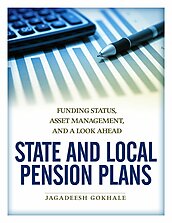State and Local Pension Plans: Funding Status, Asset Management, and a Look Ahead
State and local employee pension plans, which are primarily defined benefit plans, have come under increased scrutiny of late. Plan funding conditions have worsened during the early years of the 21st century, especially during the aftermath of the post-2007 recession. But the patterns of financial changes vary considerably across the U.S. states and under alternative ways of measuring plan funded status. Much of the worsening in plan funding conditions between 2001and 2009 occurred in states with initially well-funded pension plans. Much of the blame for this must be placed on the illogical accounting standards set by the Governmental Accounting Standards Board (GASB), which allow plan managers to discount accrued pension liabilities at rates of return expected on plan asset portfolios. But accrued pension liabilities are guaranteed under the constitutions of many states, or are at least protected by the courts, suggesting that the appropriate discount rates would be those of municipal or U.S. Treasury yield curves. Instead of the very low risk nature of pension liabilities inducing fund investments in low-risk assets, GASB accounting standards may be inducing plan managers to assume unwarranted risks by heavily weighting plan investments toward equities and real estate securities and promoting liability mismeasurement. The accounting methodology permitted by the GASB may also promote improper pension plan asset management — the failure to periodically rebalance pension plan asset portfolios. States that have smaller governments, Republican control of their legislatures, initially better funding conditions, and those less dependent on federal support for budget expenditures generally contribute more into pension plans than other states. Calculating pension funding conditions by including contributions and pension benefits that will accrue through 2045 alters the funding status of pension plans in states with robust projected growth in worker populations and those with a conservative historical record of awarding pension benefit increases. Other states will continue to struggle in improving their pension funding conditions.

This work is licensed under a Creative Commons Attribution-NonCommercial-ShareAlike 4.0 International License.

